My name is Priscilla Phifer, and I’m originally from Connecticut by way of West Virginia. I grew up partially in West Virginia until I was about ten years old. Then, we moved to Connecticut. I went to highschool there and I moved to Michigan to attend Eastern Michigan University. I got married here, and so I stayed here. I would consider Detroit to be my longtime home, or the place I really call home.
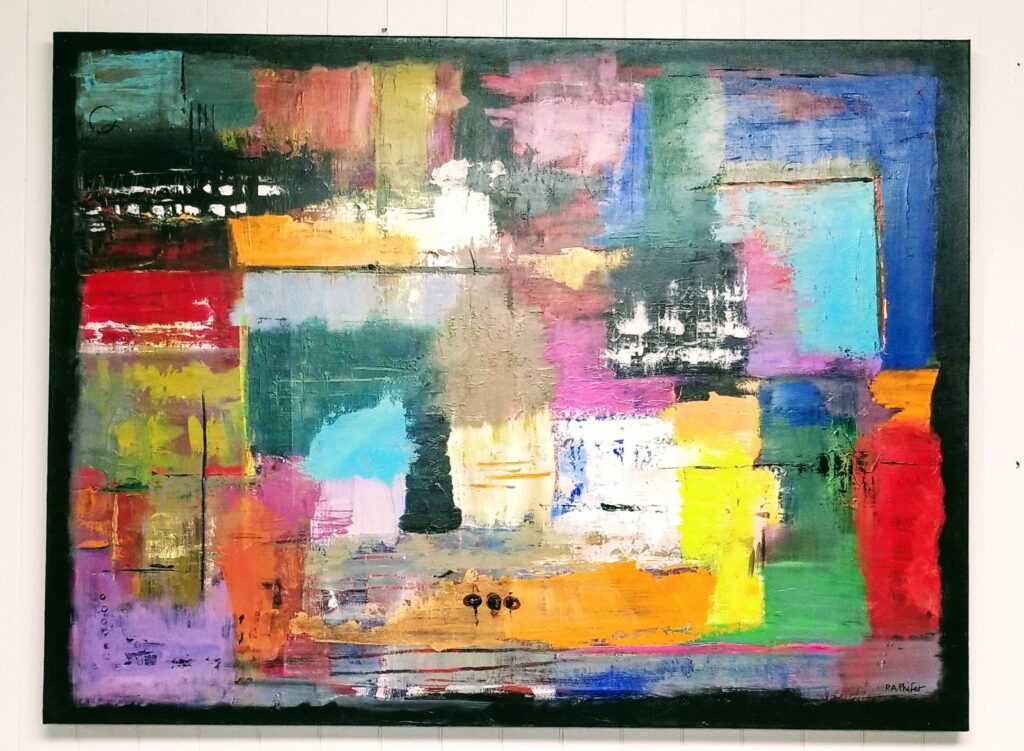
Before I became a visual artist, I was doing decoupage and other craft-like projects. I actually had a business called Rare Ambiance where I could do decoupage, and I provided items to commercial and residential establishments. One day, my husband, son and daughter-in-law said to me, I bet if you could do decoupage and all these other crafts, then you can paint on canvas. They decided to find a class for me at the Birmingham Bloomfield Art Center. The class felt like it was the wrong class for me. I was really intimidated on my first day because I showed up with my canvases that was maybe the size of a desktop. When all the other students arrived, they had these huge 36 inches by 36 canvases or even larger. I learned later that the class was really a studio class, so these were very seasoned artists who paid for studio space to do their work.
My second day there, I came prepared with all the right materials, and I felt like I was thrown into abstract art because I didn’t know how to draw. I mean I could probably learn, but I was not trained in that. Instead, I immediately discovered that I could make beautiful things just by dripping, dragging, scraping, and splashing. That was five years ago, and it became a passion of mine. I actually took two of those classes, and I did learn some things from the seasoned artists that were there. After that, I went to the Community House and one of my instructors was named Laura Mueller. She critiqued all the art I had created while in those previous classes at the Birmingham Bloomfield Art Center, and I wanted to see if it were possible to have a solo show. She would tell me constantly, Sign it. Sign your name. Sign your name. I was unsure about my art at first, and I didn’t know what people would think because I lacked confidence in it.
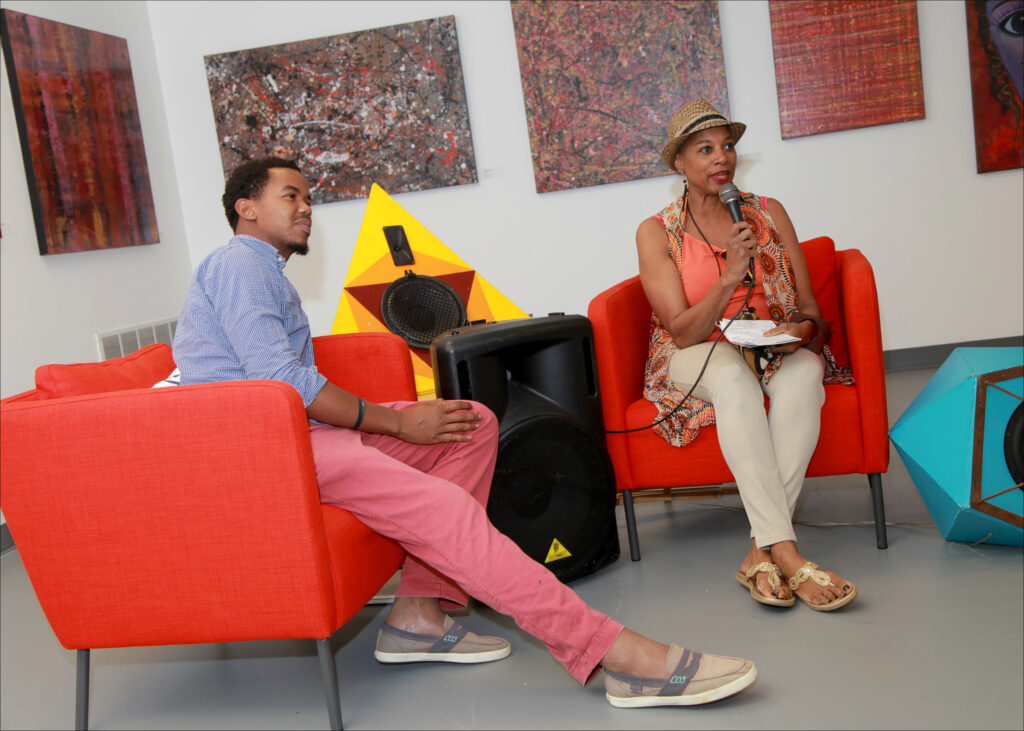
I got my first boost of confidence when I had my first solo show in May 2015. I wasn’t expecting to sell anything at the show, and I don’t think anyone on my art team was expecting me to sell much. I was so surprised when people started buying my pieces and I just kept saying, Wow! They like my art. They like my art. My pieces sold out. I had two more shows after that with a similar success rate, so that’s how I got into it. I really didn’t get into it to start a business or make income. I was just a passion of mine, but then the money came. You often hear that when you are really passionate about something, a lot of times that passion can become profitable or something that leads to bigger opportunities. I feel that it was sort of luck that people happened to like my abstract work.
Many of my pieces are what I would call linear abstract. I do a lot of dripping from the canvas and from the floor. I’m slightly colorblind, so I rely on gravity and the paint to make a blend of colors. Most of my paintings are intuitive. I generally don’t know what the painting is going to look like when I start. Usually, I get an idea of whether I am going to drip or splash and then I just see what things turn into and go from there. I guess you can say I am an experimentalist or intuitive artist. After I finish a piece, I name it.
A big influence for my art would be my mother, who passed away a couple of years ago. My mother loved to sew. She had fabrics galore. She also loved to knit, crochet, and do other crafts. My craftiness comes from her. Even now, I have a lot of fabrics around the house. If you look at my pieces and paintings, they, too, look like fabric. I think subconsciously my mom was a really big influence. As far as other artists that I am drawn to, I would say that I really like Sam Gilliam, Jackson Pollock, Charles Burwell, and Mark Rothko. When it comes to local artists, I am drawn to Gilda Snowden. I have a series called “You Are Here Series” that was inspired by Mark Rothko and Charles Burwell.
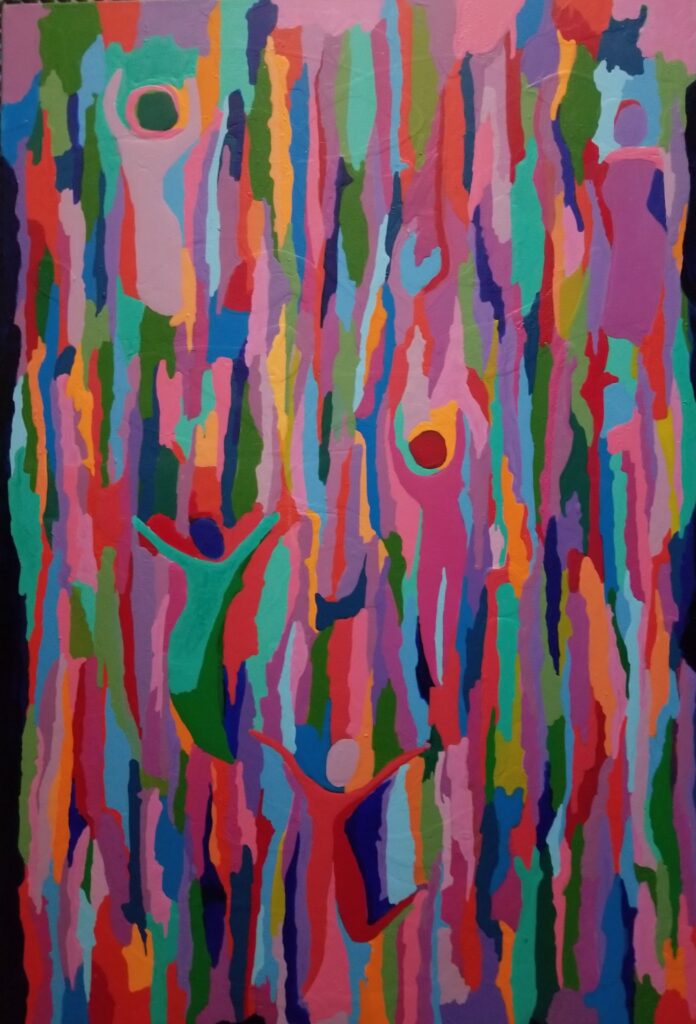
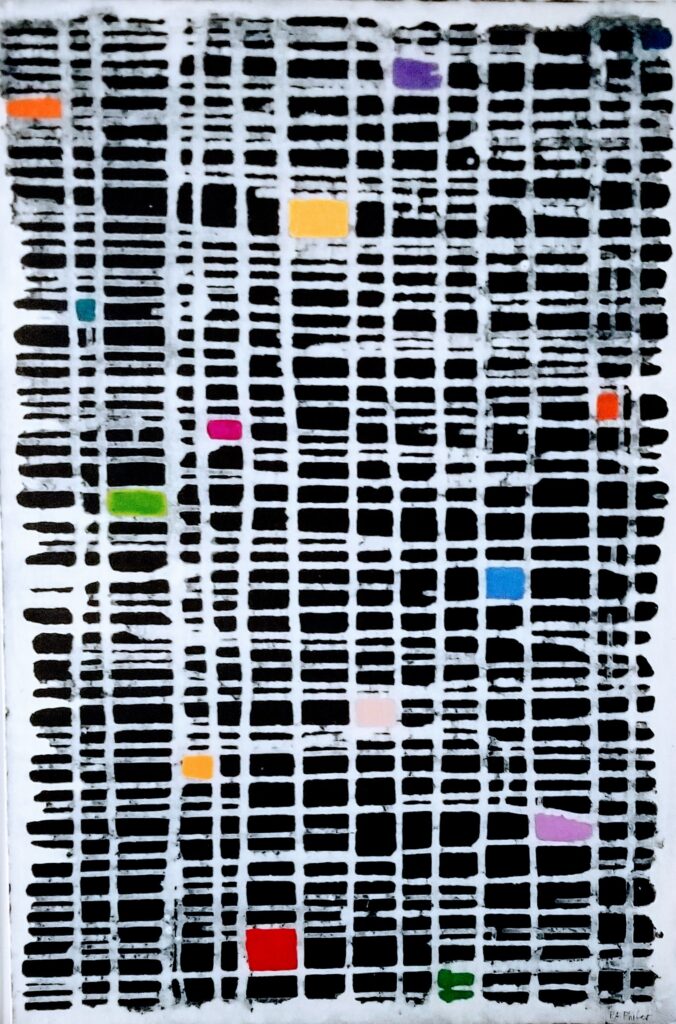
I want people to take away joy and inspiration from my art. I hope that when they look at my piece, that it brings them a good feeling. I also hope that after I am gone, they will remember me. I actually remember every collector of my art, so I would hope that they remember me too. Thinking about inspiration more in depth, this is a late career for me. I am 75 years old now. I want to inspire the people who think it is too late or think they are too old. I want them to look at me and say, if she can do it, I can do it.
I have not faced many barriers yet in my art career. I think it has something to do with the fact that I am not doing this for fame or notoriety. I’m not implying that everyone is doing that, but the purpose of my work is not to bring more attention to me as an artist. I am just doing what I love, so for that purpose, I feel like I have not come across too many barriers as an artist. Now, this is subject to change if I decide I want to do more with it or take it to the next level, but for right now, it is just my passion and I am content with where I am. As a Black artist, I will say that I sometimes get remarks that my artwork is not “Black” enough or that it doesn’t look like Black art. I just respond to them that my Black soul is in it, so that makes it Black art. It does bother me just a little that people think more figurative work is more representative of Black art, but I work to show people that we can be successful doing abstract work as well.
I think it is important to support local Black artists because they have a pulse on the community. They know what is happening in the community and oftentimes, they put that or the feelings about what’s happening on a canvas. I think that can be helpful, or even therapeutic to others who are going through the same things or feel the same way. To see what you are experiencing on canvas can help someone identify their problems and know that they are not the only one. We should also support local artists because it helps to strengthen their business and as a result, it strengthens the overall community. When people in our communities are supported in a way that allows them to stand alone and become independent, that helps the community too.

It is important to support and celebrate Black artists beyond Black History Month because Black art is American art. I feel strongly that we need to support Black art because they are recording our culture. Not only do they record our culture, but they also record our history and record current events. They also play a role in shaping our culture and all of that is so important to us as a people. It is important for us to have access to that and be able to see that.
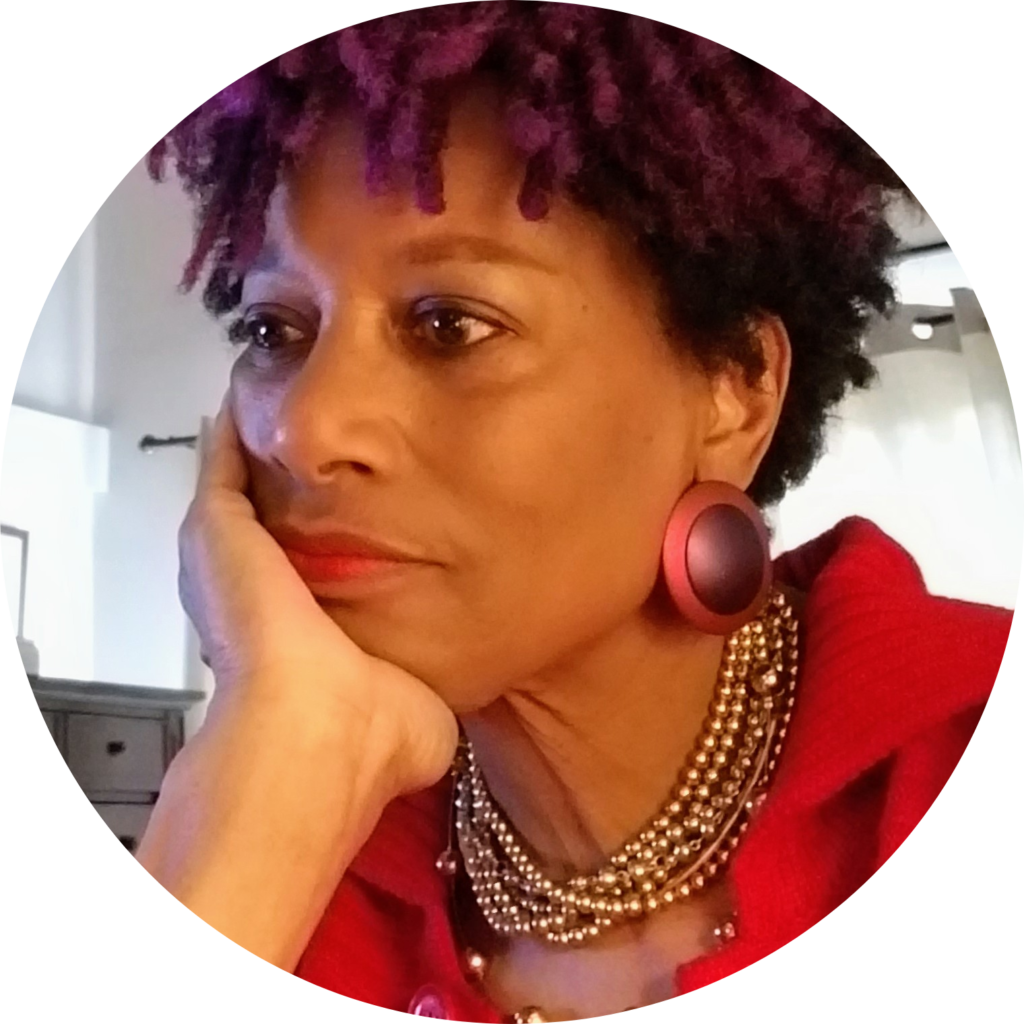
Priscilla Phifer, Abstract Painter
Detroit, MI
IG: priscilla.phifer
The Black Artists Series highlights local Black artists and their journeys. Due to COVID-19, we’ve turned our original video series into a blog-style series. The blog is fully in the artist’s own words.